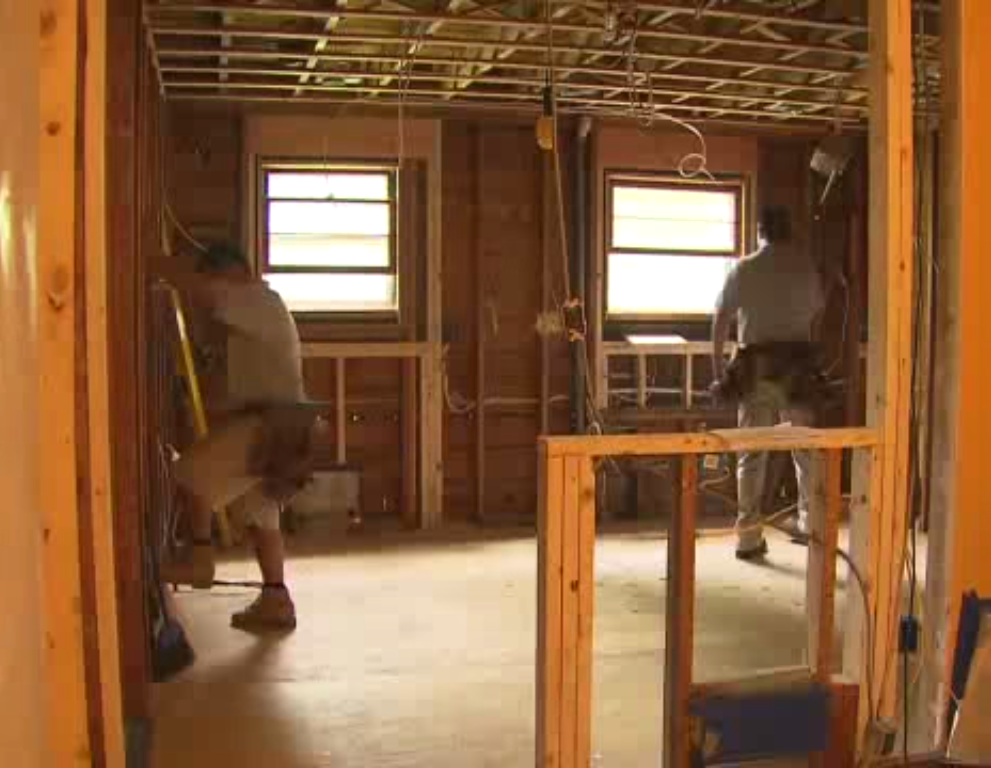The Remodeling Process - Construction Overview
May 21, 2016 06:03 AM Filed in: Construction
As soon as your design is finished, you can start planning for construction. Your contractor will review the design and present you with a proposal that describes the scope of work and cost to complete the project.
Independent contractors will require one or more meetings with you and your designer to clarify certain elements and objectives of the design. However, if you’re working with a design-build firm, these meetings are often unnecessary, since their internal design and construction teams are used to collaborating and communicating efficiently throughout the process.
Once you accept the proposal, your contractor will typically incorporate the scope of work and specifications into a formal construction contract or agreement that you’ll both sign. You’ll agree on deposit and payment terms, spell out any special conditions, and determine a construction schedule.
While exact timeframes are difficult to calculate since every remodeling project is unique, an experienced contractor can give you a reasonably accurate estimate of start and completion dates. Just be prepared for the inevitable scheduling hiccups as work progresses - it’s par for the course in construction!
Insist on a dedicated Project Manager to be assigned to the project by your contractor. The Project Manager has day-to-day responsibility for the job’s success and your satisfaction. He’s the main contact point and organizer between you and the carpenters, tradesmen, suppliers and inspectors. He’ll start with a pre-construction meeting with you to review the steps and schedule, and discuss any changes you may have thought of before the work actually begins.
Changes, by the way, are a normal and expected part of any renovation. Even with the most careful design, you’ll probably think of things you’d like to see altered as your project takes shape. That’s OK. Just remember that changes can be expensive and time-consuming once work is underway.
Efficient contractors will have an easy way for you to make changes. They’ll determine the impact on the construction budget and schedule, and give you the opportunity to decide whether the increased cost is worth your investment. They’ll typically follow a standard “Change Order” procedure (more on this topic in an upcoming post).

Independent contractors will require one or more meetings with you and your designer to clarify certain elements and objectives of the design. However, if you’re working with a design-build firm, these meetings are often unnecessary, since their internal design and construction teams are used to collaborating and communicating efficiently throughout the process.
Once you accept the proposal, your contractor will typically incorporate the scope of work and specifications into a formal construction contract or agreement that you’ll both sign. You’ll agree on deposit and payment terms, spell out any special conditions, and determine a construction schedule.
While exact timeframes are difficult to calculate since every remodeling project is unique, an experienced contractor can give you a reasonably accurate estimate of start and completion dates. Just be prepared for the inevitable scheduling hiccups as work progresses - it’s par for the course in construction!
Insist on a dedicated Project Manager to be assigned to the project by your contractor. The Project Manager has day-to-day responsibility for the job’s success and your satisfaction. He’s the main contact point and organizer between you and the carpenters, tradesmen, suppliers and inspectors. He’ll start with a pre-construction meeting with you to review the steps and schedule, and discuss any changes you may have thought of before the work actually begins.
Changes, by the way, are a normal and expected part of any renovation. Even with the most careful design, you’ll probably think of things you’d like to see altered as your project takes shape. That’s OK. Just remember that changes can be expensive and time-consuming once work is underway.
Efficient contractors will have an easy way for you to make changes. They’ll determine the impact on the construction budget and schedule, and give you the opportunity to decide whether the increased cost is worth your investment. They’ll typically follow a standard “Change Order” procedure (more on this topic in an upcoming post).

